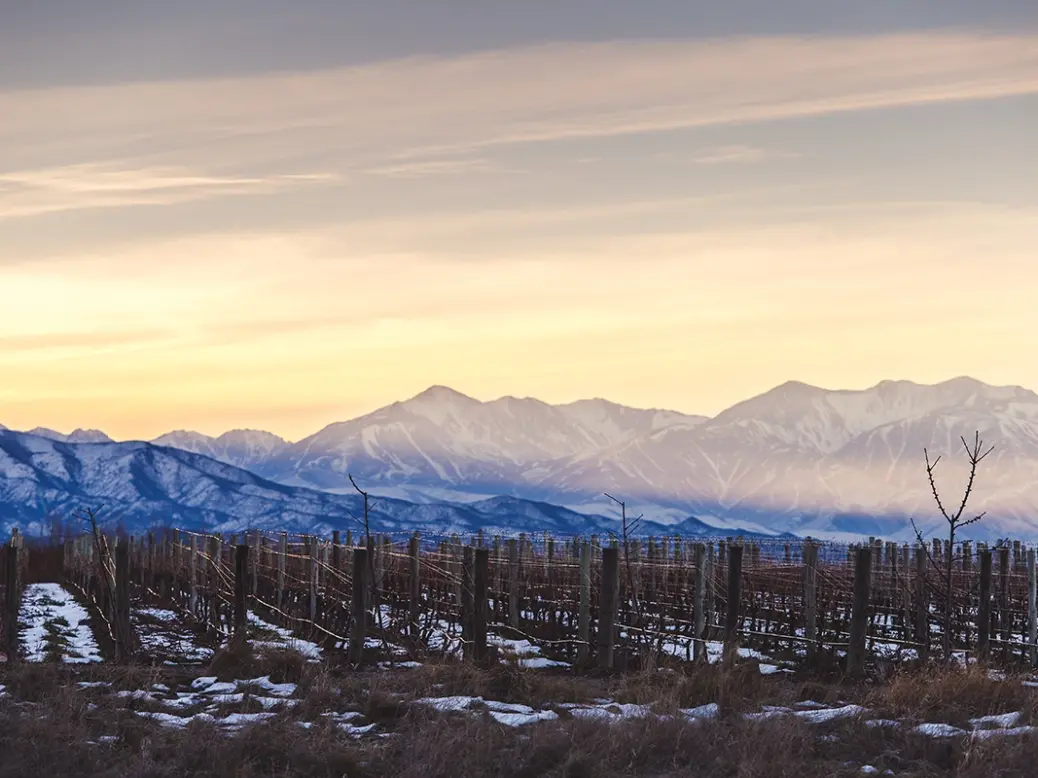
Gualtallary. Remember that name (if you don’t know it already). There’s a magic and music in the sound, don’t you think? It’s the sort of name that might appear in a loose-limbed number sung by the grand old artists of Buena Vista Social Club. Remember it—and then forget it for a while.
I’ll wager that the late philosopher and wine lover Roger Scruton wasn’t familiar with Gualtallary. Scruton had a cultural-sacramental theory of wine place names or appellations. “Each acre of soil in Puligny-Montrachet,” he wrote, “has its own fertilising mulch of history, in which saints and sinners have conspired to consecrate the grape.” For him, a great wine name such as Mouton or Montrachet has to do with “culture, settlement, and pietas,” as well as terroir in the narrower sense of geology, microclimate, and so on.
Scruton, it must be said, had no time for New World wines. As if taking Sir Les Patterson at face value, he assumed that Australian—and Californian, and Argentinian—wines must be vulgar, parvenu creatures. It was almost as if because they didn’t come from plots tended for centuries by Cistercian monks, they couldn’t be great wines.
On my first visit to California, in 1989, the estates that impressed me most were those where the magic of place was combined with personal passion. One was Ridge, another was Mayacamas, another was Carmenet. Mayacamas and Carmenet were remote mountain vineyards, awe-inspiring in a different way than Cistercian abbeys. Traipsing the Mayacamas vineyards with Bob Travers I remarked on the turkey-vultures circling overhead; “Yeah, waiting for the day you don’t make it back home,” he responded with humorous grimness. This, as the First Nation name already intimated, was more John Wayne than Gérard Depardieu country.
Ridge occupies a high snake-haunted shoulder of the Santa Cruz mountains, looking down on Silicon Valley on one side, and on the other a bucolic fold in the hills through that, as philosopher/winemaker Paul Draper pointed out to me, runs the San Andreas Fault. I’m not sure what any of this had to do with culture, settlement, and pietas. But I would say that great wines are made only where at least one wine grower (and probably a team) falls deeply in love with a particular place. And that can lead to the place becoming sacred in another way than the one Scruton insisted on.
People and place
So, finally we get back to Gualtallary. This place is in Argentina—in the Uco Valley, in fact, a subregion of 2,578ha (6,370 acres) under vine within the larger region. Gualtallary is not an easy place to grow vines; stony, sometimes with almost no topsoil, very dry and so needing irrigation, and pretty cold also. No one bothered until the 1990s, when first Chandon (for sparkling wine) then Catena and others began to plant white grapes. The soils are actually very varied in Gualtallary—sand, loess, calcareous—and the subregion is divided into a number of quite distinct zones.
The zone that captivates and obsesses viticulturist Edy del Popolo is “high Gualtallary,” where the vineyards go up to 4,300ft (1,300m) and where the hills turn white with chalk. I wouldn’t be writing about Gualtallary if it hadn’t been for a meeting with del Popolo in London, where we didn’t just taste some remarkable Gualtallary wines, but I noticed the way this modest but gifted man’s voice softened or warmed every time he uttered the word. He is the wine grower who fell in love with the place.
Much could be written about the wines from Susana Balbo’s Dominio estate that del Popolo showed on that occasion. The refined and floral BenMarco Sin Límites Chardonnay 2022, for example, with its striking backbone of acidity, showed why from the beginning Gualtallary attracted wine growers seeking white grapes with vitality and nerve. But I could equally well sing the praises of the BenMarco Sin Límites Malbec 2021, one of those high-altitude, cool-climate expressions of the grape that have redefined Argentinian Malbec’s identity, at least in this aficionado’s sensory imagination. Plum and chocolate receded into the background, with bright notes of red cherry and wild herbs tumbling into the foreground.
But in the end, what I want to focus on is the relationship between the wine grower (and her or his successors) and place. Puligny-Montrachet and Chambolle-Musigny are magical names to me not so much because of their mystical connection to what reactionary French thinker Charles Maurras called le pays réel but because, generation after generation, wine growers kept their faith in and refined their knowledge—in the most intimate detail—of those village appellations and all the lieux-dits within them, some of which in due course became sanctified as grands and premiers crus.
This was a process that took centuries. In the New World countries, it is happening faster (like almost everything in the world these days). But it is still a multigenerational task. Edy del Popolo is, I guess, eying the end of his career as much as looking back on the beginning. He will go down as one of the pioneers of Gualtallary, and as he peers into the future, he feels that the place that holds his heart is in good hands. “I am confident about the young generation of wine growers,” he said. And I am confident that one day—perhaps not at all far off—Gualtallary will be just as sacred a name as Puligny-Montrachet.






